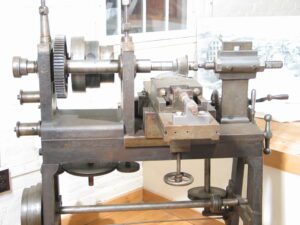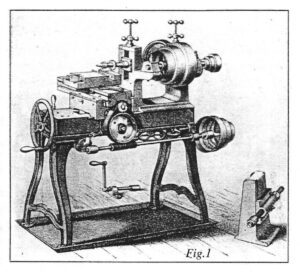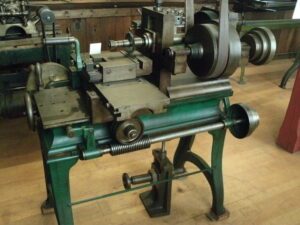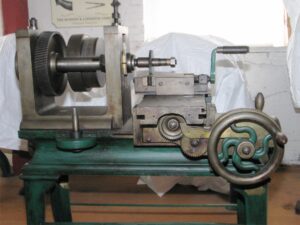Blog
Machine of the Month: Lincoln Mill

We have three milling machines and a drawing that go together in interesting ways.
Frederic W. Howe was a supervisor here at Robbins & Lawrence. He had a very inventive mind. We have several machines on exhibit that are credited to him as the designer. The one of them that we are interested in this month is called the Howe milling machine. It’s said to have been designed in 1850. It’s very straightforward, designed to do hard work persistently. It’s not designed to have its setups changed quickly and it’s not very flexible, but for its time, it was a real help in many shops.
One truly remarkable thing about this machine is that we have an original drawing of it. The drawing is full size, it’s intended to be used as a measurement reference for the men who were building the machine. There are a few dimensions on it, very few.
In 1855, Frances Pratt was working in George Lincoln’s Phoenix Iron Works. Pratt realized that if the feed mechanism was changed in a simple way, the machine would do better work.
To move the workpiece under the spinning cutter, the Howe machine used a rack and pinion. A rack is a straight gear, not circular. A pinion is a round one. As the pinion turns and moves from tooth to tooth, there is a slight “bump”, which interferes with the quality or finish of the cut being made. It’s also harder on the cutter. Pratt’s solution was to have the workpiece driven by a screw thread. This modest change was so successful that the machine was produced on into the 20th century. Since it was first produced by Lincoln’s company, it became known as the Lincoln mill.
Here is an old illustration from “American Milling Machine Builders 1820 – 1920” by Kenneth L. Cope .
Here is our early Lincoln – type milling machine.
Here is the other side of it.
This is our later Lincoln – type milling machine. It was made in the early 20th century by Pratt & Whitney, the company that Francis A. Pratt founded with Amos Whitney in 1860. {insert 11-11-99-01}
(Only the Howe milling machine is on exhibit at this time.)
stay up to date
Want more content from the American Precision Museum?
Sign up to receive news straight to your inbox!
By submitting this form, you are consenting to receive marketing emails from: . You can revoke your consent to receive emails at any time by using the SafeUnsubscribe® link, found at the bottom of every email. Emails are serviced by Constant Contact





